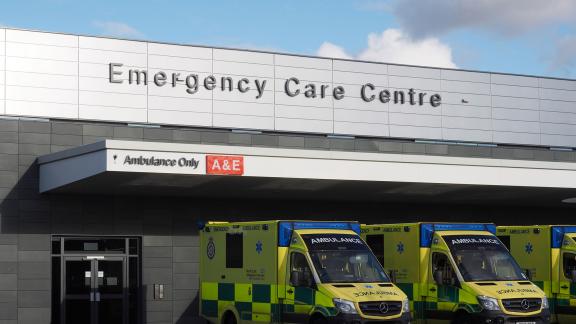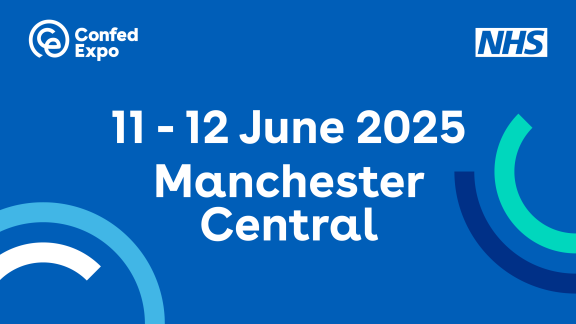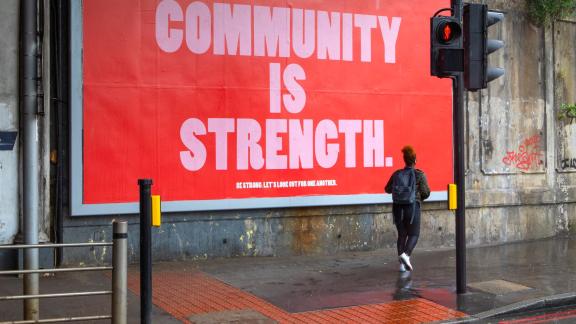Office for Health Improvement and Disparities and health inequalities : Westminster Hall debate

Background
In a survey of healthcare leaders we conducted in September 2020, nine out of ten (91 per cent) respondents agreed that addressing health inequalities must be at the forefront of the reset process for the NHS and that the time to act is now.
The majority of respondents (84 per cent) agreed or strongly agreed that COVID-19 has shown that the NHS must deliver a step change in how it cares for diverse and marginalised communities.
Seventy-six per cent of respondents agreed that black and minority ethnic (BME) communities have poorer access to, and outcomes from, NHS services.
Integrated Care Systems (ICS) - which are due to be put on a statutory footing by the Health and Care Bill – provide an opportunity for a place-based focus on inequalities. One of the four core named purposes of ICS is to tackle inequalities.
If you would like to have a further briefing from us, or if you plan to speak in the debate, please do get on touch with Caitlin Plunkett-Reilly, external affairs manager (public affairs).
What healthcare leaders want
Healthcare leaders we survey supported the need for a cross-government approach and joined-up national policy for issues such as homelessness and housing, poverty and support for marginalised and vulnerable groups.
They suggested that without consistent national policy, local partners are often left to manage competing priorities. Instead, they argue for action, at scale and pace, with a commitment to address the underlying factors and wider determinants of inequality.
The NHS Confederation is a member of the Inequalities in Health Alliance, which is calling on government to:
- establish a cross-government strategy to reduce health inequalities
- commence the socio-economic duty, section 1 of the Equality Act 2010
- Adopt a ‘child health in all policies’ approach.
NHS leaders believe eradicating health inequalities are ‘core business.’ Most respondents (84 per cent) to the survey cited above agreed that COVID-19 has shown that the NHS must deliver a step change in how it cares for diverse and marginalised communities.
The NHS Confederation is working with members to equip them to tackle health inequalities in their local areas, after fewer than half of respondents (41 per cent) to our survey told us felt they had the knowledge, tools and support to enable them to tackle health inequalities.
The NHS Confederation believes tackling health inequity needs urgent additional investment in public health, that is distributed based on proportionate need to help lay the foundations for a generational change in the nations’ health and healthcare.
Many NHS Confederation members have been doing excellent work locally to reduce health inequalities.
The government’s efforts on levelling up must – there is no levelling up without tackling health inequalities.
Case Study – tackling health inequalities is not exclusively the province of the NHS
Cheshire and Merseyside Health and Care Partnership (HCP)
The Cheshire and Merseyside (C&M) region has a population of 2.5 million and health inequalities are mixed. Areas such as Liverpool, St Helens, the Wirral and Knowsley experience some of the highest levels of deprivation in England.
The HCP’s business plan put action on health inequalities at the top of its priority list. If a programme or project doesn’t have health inequalities at its core, it doesn’t get approved.
Local and devolved government were involved from the start – including local Metro Mayors Steve Rotherham and Andy Burnham. This has ensured that the focus is as much around regeneration, housing and income levels of poorer families as it is around health and has helped drive a more sustainable prevention agenda.
At the heart of the approach is an ethos that tackling inequalities is not exclusively the province of the NHS but is closely linked to the economic prosperity of the region. The HCP has taken a local approach to social value, establishing business and industry and the voluntary community, faith and social enterprise (VCFSE) sector as anchor institutions.
The HCP also works closely with the Champs Public Health Collaborative (Champs), which has developed a comprehensive and systematic approach to improving public health priorities by large-scale action and working together as system leaders across Cheshire and Merseyside. Champs has enabled multi-agency working, providing public health expertise to key strategic groups and delivering innovative projects to improve health and wellbeing.
The HCP has established three principles for ensuring a better future for people in their locality:
- Living together – designing homes and neighbourhoods and public spaces that promote wellbeing and reduce carbon emissions while reimagining public spaces to align with a healthy community.
- Working together – using social value and community wealth building. Leveraging the power of public spending and the leadership of anchor institutions to support well-paid, secure, and meaningful employment and apprenticeship opportunities; sustainable and ethical local businesses; and the development of thriving communities.
- Innovating together – developing a ‘living lab,’ working within and across communities, organisations and systems to test and trial new solutions to the key challenges people and places face. Embedding the levels of ambition, and willingness to do things differently seen during the pandemic across everything the partnership does, adopting a ‘people first’ approach.
Health inequalities and the elective backlog
The number of people waiting for planned NHS care in England has grown to record levels, with more than 5.6 million people currently on the waiting list and over 7 million ‘missing patients’ anticipated to come forward for treatment.
Inequalities are now becoming evident in the backlog, with evidence suggesting that waiting lists have grown more rapidly in more deprived areas during the pandemic.
These areas could face disproportionately large waiting lists per head of population, and deprived communities could also have more unmet need.
There are good reasons to believe that the current approach to elective care, whereby patients are treated in the order they present for care, exacerbates inequalities, worsens health outcomes and perpetuates the inverse care law.
The NHS Confederation has identified actions government should take that would ensure we can recover the backlog inclusively:
- Avoid changing or removing promised funding which are disruptive and damage NHS staff morale.
- Accept amendments to the health and care bill which will ensure the Secretary of State undertakes detailed assessments of future workforce requirements for Treasury to provide funding to train to avoid the current workforce situation in the future.
- Develop a new commitment to prioritisation based on need, openness, transparency and public engagement. More specifically:
- Be honest that significant short to mid-term rises in the waiting list are now inevitable
- Be realistic about waiting time expectations
- Explain how approaches to prioritisation protect the most vulnerable and improve overall outcomes to support the NHS in the longer term
- Support the production of data disaggregated by population stratifiers such as ethnicity/deprivation
- Issue proactive communications to increase patient attendance rates for booked appointments and procedures
- Invest to assess patient experience of current pathways
- Publish data on access and clinical prioritisation alongside outcomes to avoid unwarranted local variation and support public dialogue.
Case Study – tackling long waiting lists and health inequalities
University Hospitals of Coventry and Warwickshire NHS Trust
The Trust went into the pandemic with zero 52 week waiters, but a year later, they had 5000. In addition, it also had a 53,000 long referral to treatment waiting list.
To address these waiting lists, the trust set up a shared Patient Tracking List (PTL) that allowed conversations about distribution of patients across the system to where there was spare capacity in a specialty. The PTL also exposed a number of people who had been referred to multiple hospitals, either for a single condition or multiple ones. This raised the question of whether they would be better treated at a single site or if a multidisciplinary approach was required.
Over three months, the trust reduced the number of 52-week waiters by a quarter. Patients are still treated in order of clinical priority but within waiting list categories within the PT there are opportunities to look at potential outcomes for patients, as well as waiting time.
This means the trust can identify people who have co-morbidities, or a condition that means their employment could be affected. In addition, the trust is working with Primary Care to proactively seek out people who have not come forward for treatment.



